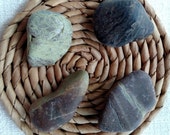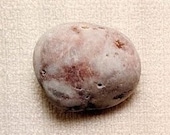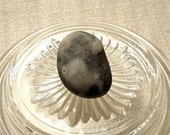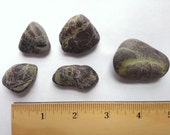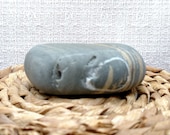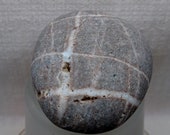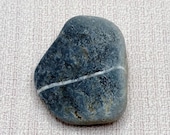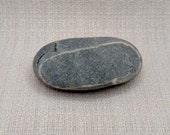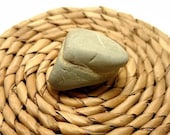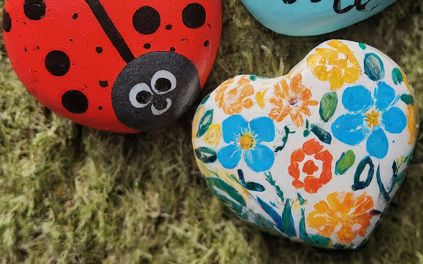The Art and Science of Collecting and Preserving Heart-Shaped Beach Stones
These little heart shaped beach stone treasures, crafted by nature herself, have stories to tell and a unique charm that draws us in. Join me as we explore not just how to find these beauties but also the gentle art of collecting and the science behind preserving their timeless beauty.

The Gentle Art of Collection
Respecting Nature’s Canvas
Our first step into the world of collecting heart-shaped stones is one of mindfulness and respect. The beauty of these stones is entwined with the fragile ecosystems of the coastal areas. Check local regulations and guidelines before collecting, and ensure that your quest for these treasures aligns with environmental stewardship.
Selection Criteria
In the quest for heart-shaped stones, embracing diversity is key. The coastline offers an array of shapes, sizes, and colors, each with its own unique charm. Let your intuition guide you as you select stones that resonate with your heart; after all, the joy is in the discovery.
Patience as a Virtue
Collecting heart-shaped stones is a patient pursuit. It involves a mindful stroll along the shoreline, where the lull of the waves becomes a soothing soundtrack. The act of finding is often intertwined with moments of quiet contemplation. Sometimes, the best discoveries arise when least expected.
The Serendipity of Finds
As you collect, relish the serendipity of finds. The imperfectly shaped stones, the ones that tell tales of rough tides and enduring storms, are as much a part of the collection as the symmetrical hearts. Nature’s serendipity is, after all, what gives each piece its character.
Coastal Beach Stones
Cleaning and Preserving Your Collection
The Art of Gentle Cleaning
Your gathered heart-shaped stones deserve a gentle touch during the cleaning process. A soft brush and water are sufficient to remove any clinging sand or debris. Avoid harsh chemicals; instead, rely on the natural elements that have sculpted these stones over time.
The Ritual of Air-Drying
After the cleansing ritual, allow your stones to air-dry. The simplicity of air and sunlight contributes to their natural beauty. Sunlight can enhance the inherent colors, and the breeze adds a touch of the coastal essence. This air-drying process connects your stones with the very elements that shaped them.
The Sacred Display
Now that your heart-shaped stones are pristine and dry, it’s time to showcase them. Consider this a sacred act — a presentation that respects the essence of each stone. Glass jars, wooden trays, or shadow boxes can serve as elegant altars for your collection. Experiment with arrangements, letting your creativity intertwine with nature’s artistry.
The Patina of Authenticity
Preserving the patina of authenticity is vital. These stones, having weathered the elements, carry a story etched in their surface. Avoid overly polishing or altering their natural state. Embrace the imperfections, for they are part of the narrative these stones whisper.
Balancing Rocks – Cairns
Creating a Journal of Memories
As your collection grows, consider creating a journal or scrapbook. Document each stone’s origin — note the date, the location, and any unique memories associated with the find. This journal becomes a personal chronicle, adding depth and sentiment to your growing collection.
The Science Behind Preservation
Understanding Geological Composition
Beyond the art of collecting lies the science of preservation. Understanding the geological composition of your stones can provide insights into their preservation needs. Different minerals react differently to environmental conditions, and this understanding guides the long-term care of your collection.
Temperature and Humidity Control
Heart-shaped stones, like all geological formations, respond to changes in temperature and humidity. Consider the climate of your storage area. If possible, maintain a consistent environment to prevent unnecessary stress on the stones.
Avoiding Direct Sunlight and Harsh Elements
Just as coastal winds and waves shaped these stones, extreme elements can alter their appearance over time. Avoid displaying your collection in direct sunlight for prolonged periods, as this could affect color and texture. Similarly, protect them from harsh elements that might accelerate wear.
Storage in Controlled Environments
For long-term preservation, consider storing your heart-shaped stones in controlled environments. Wooden cabinets or glass display cases provide protection while allowing for visual appreciation. Ensure adequate ventilation to prevent moisture buildup.
Regular Inspection and Cleaning
Periodic inspection and cleaning are essential. Dust and environmental residues can accumulate, impacting the stones’ appearance. A soft brush or a gentle wipe with a damp cloth can suffice for routine maintenance.
Wishing Rocks
Conservation Practices
For those deeply invested in conservation, reaching out to local geological or natural history societies might provide valuable insights into advanced preservation practices. These organizations often have resources and expertise for enthusiasts looking to take their preservation efforts to the next level.
A Timeless Journey
As we conclude our exploration into the art and science of collecting and preserving heart-shaped beach stones, remember that this is a timeless journey. Each stone in your collection is a piece of the coastline’s history, a silent storyteller of waves, storms, and the enduring beauty of nature.
May your collection grow, and may the tales within each heart-shaped stone echo through the ages. Happy collecting!

